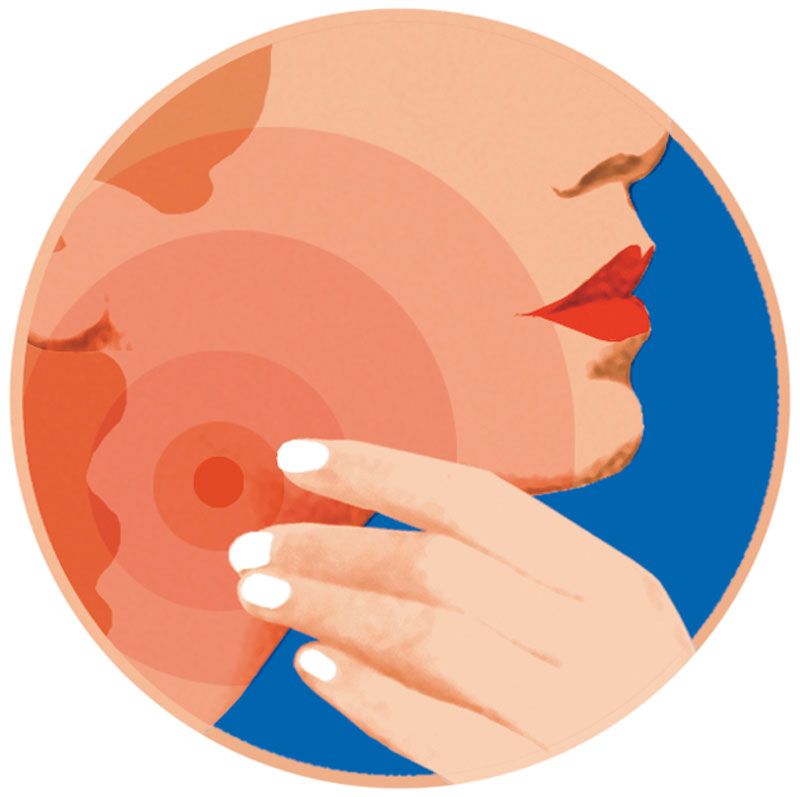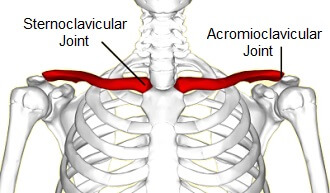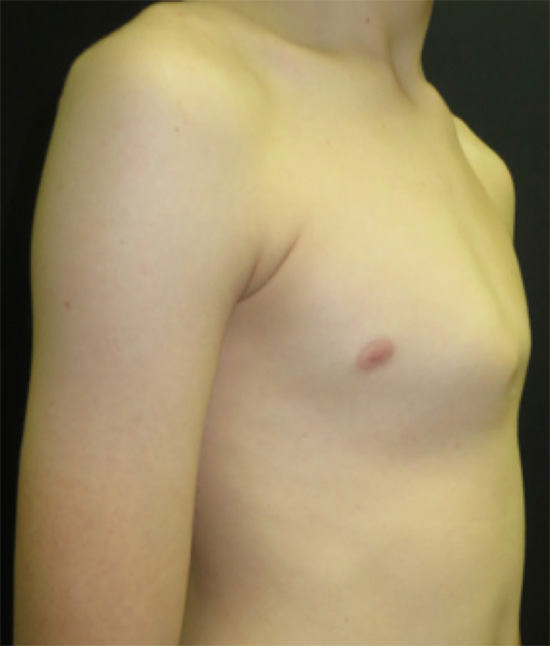Finding a lump under your skin can be a worrying discovery — but lumps under the skin are more often relatively harmless than cancerous.
I have a very large lump (a little larger than a golf ball) on the cervical part of my spine (right at the base of neck, between shoulder blades). I have had an ultrasound that was negative for anything, but the lump is visible. It is soft and movable, and only slightly painful when messed with too much. “Lymphomas may present as painless swelling in the lymph nodes of the neck and collarbone region, or the armpits or groin,” continues Dr. Abnormal Lump on the Collarbone (Clavicle) that Was Never There Before “The clavicle is a very superficial bone,” says Dr.

To help you better understand when to be concerned about a lump under the skin, we talked to Vinod Nambudiri, MD, of Dana-Farber’s Center for Cutaneous Oncology.
What are some of the most common causes of skin lumps?
Lumps under the skin can have many different causes resulting from a variety of different processes. The processes that can form lumps can be benign (non-cancerous) or malignant (cancerous).

Benign lumps include:
- Cysts, which can form when an oil-producing gland in the skin becomes clogged.
- Lipomas, a collection of harmless fatty cells.
- Swollen lymph nodes, which can accompany some types of infections.
While potentially uncomfortable, these types of lumps are harmless and are not cancerous.
More rarely, a lump under the skin can indicate cancer. Cancerous lumps under the skin can be harmful and should be attended to by a doctor.
If you are concerned about a lump under your skin, don’t hesitate to get it checked out — especially since cancer cannot be diagnosed without a doctor.
Is there a way to determine if a lump is just a cyst?
Some individuals are more susceptible to cysts than others. Cysts can form when normal cellular turnover in the skin is disrupted. There are other rarer causes that can be related to genetics and family history as well.
Cysts have certain characteristics that can distinguish it as a cyst. One in particular is a small opening, known as a pore or punctum, in the center of the lump. This pore can be potentially hard to find, however. Some cysts also have a certain way that they feel and move under the skin. For example, a cyst may have a smooth surface, or may roll under the surface of the skin when pressure is gently applied.
A self-exam at home may provide some insight into whether or not a lump is a cyst, but you will need the help of a doctor to get a definitive diagnosis.
When should I be worried about a lump under the skin?
Soft Painless Lump On Collarbone Bone
If you are at all concerned about a lump under the skin, don’t be afraid to seek medical attention. Certain attributes can lend to a lump being more concerning than others.
A lump that grows and then goes away on its own can usually be attributed to an inflamed cyst, which is normally harmless. A “doughy” lump is usually associated with a benign lipoma. Likewise, lumps that are harmless can often be accompanied by tenderness, pain, or drainage.

Signs that suggest a lump might be concerning include:
- if it suddenly becomes very hard or feels like a rock under the skin.
- if the lump starts bleeding or becomes a wound.
- if the lump begins growing rapidly.
If a lump is showing any of these symptoms, it should be looked at by a doctor. Likewise, any lumps that are new, growing, or symptomatic should be checked out by a physician.
Should I be concerned about a lump under the skin after the COVID-19 vaccine?
Side effects of COVID-19 vaccines can include enlarged lymph nodes in the armpit or neck on the side where the person got vaccinated, which is very much a normal response to the vaccine and should go away within a week or two. If lump swelling persists beyond two weeks, talking to a medical professional is likely advised, says Harold Burstein, MD, PhD, a physician in the Breast Oncology program at Dana-Farber/Brigham and Women’s Cancer Center.
The vaccine should not cause any swelling in the breast itself; if you notice changes in the breast, let your doctor know.
Burstein also notes that Dana-Farber is advising breast cancer patients to get vaccinated in the arm on the opposite side of the breast in which they developed cancer to reduce any chance of lymphedema in breast cancer survivors.
Remember: Dana-Farber recommends that both cancer survivors, and active patients on therapy, should receive the COVID-19 when it is made available to them.
How do you treat a lump?
If the lump is benign, it may not require any treatment at all. Your doctor may decide to simply monitor it overtime and keep track of any changes.
If the lump is a cyst and has become inflamed or infected, the doctor may drain it or preform a procedure called an intralesional injection. In the case of an intralesional injection, a doctor will inject medicine directly into the lump in order to treat it. A lump can also be removed from under the skin if necessary.
If a doctor is concerned about the lump, doctors may perform a biopsy to look more closely at the cells inside the lump. If the lump is cancer, doctors will devise an appropriate treatment plan.
Soft Painless Lump On Collarbone Area
What are some signs of skin cancer?
The most common types of skin cancer are usually caused by exposure to ultraviolet light. Because of this, areas of the body that are often exposed to sunlight — like the face, ears, neck, scalp, and hands — can be at a higher risk of developing skin cancer. If skin lesions develop in those areas (or other areas of the skin) and have the following characteristics, they should be evaluated by a doctor:

Lump On Collarbone Doctor
- Tender
- Painful
- Bleeding
- Accompanied by new symptoms
- Has changed in color
- Large
Soft Painless Lump On Collarbone Symptoms
There are several different types of neck lumps, with causes ranging in severity from mild to life-threatening. The most common type of neck lump is a swollen lymph node, which can have a variety of different causes, including bacterial or viral infections and even cancer. Other types of neck lumps include those caused by swollen salivary glands just below the jaw line, lumps in the neck muscles or those caused by an enlarged thyroid. A neck lump may also be cystic when it is in the skin or located just below the skin.
Lymph nodes are located throughout the body as part of the immune system, and help to identify and battle bacteria, germs and other unknown cells. Lymph nodes in the neck, also known as cervical lymph nodes, are divided into eight sub-types, depending upon their location. These include submandibular lymph nodes, located under the jaw on each side; submental lymph nodes, found under the chin; and jugular lymph nodes, situated above and below the sternocleidomastoid muscles (SCM) on both sides of the neck.
The remaining types are the posterior cervical lymph nodes, located in a line posterior to the SCM and in front of the trapezius, and suboccipital lymph nodes, found between the neck and back of the head. Situated behind the ears, the postauricular nodes are also included, as are the preauricular lymph nodes, which can be found in front of the ears. Others included are the supraclavicular lymph nodes, which are located in the hollow above the clavicle.

Common causes of cervical lymph node enlargement can include strep throat, tonsillitis and bacterial pharyngitis. Less common causes of swollen neck nodes may be Cat Scratch disease, tuberculosis and cancer. Malignancies that can cause cervical lymph node swelling are leukemia, Hodgkin lymphoma, non-Hodgkin lymphoma and mouth cancers.
Soft Painless Lump On Collarbone Bone
Like cervical lymph nodes, salivary glands, which produce saliva in the mouth and throat area, may also swell in response to an infection or malignancy and result in neck lumps. A salivary gland stone or obstruction is an additional cause of a palpable neck lump. Mumps, a painful enlargement of the salivary gland caused by a contagious viral infection, may present in a similar manner.
Thyroid disease or thyroid cancer may cause an isolated neck lump, several lumps or leave the entire neck completely swollen. Grave's disease, an autoimmune condition that is characterized by hyperthyroidism, or an overactive thyroid gland, may also cause a benign swelling of the thyroid, known as a goiter. Goiters may also be caused by an iodine deficiency, or the cause may be unknown.
Soft Painless Lump On Collarbone
A neck lump may be cystic in nature, if it is located in the skin or just below the skin. The most common type of cyst in the neck area is a sebacious cyst, which is typically a sac below the skin containing an oily or cheese-like substance. Equally benign, a neck lump may be caused by an injury to the neck muscle itself or by torticollis, a genetic condition that may result in a twisted neck. Any neck lump should be evaluated by a physician to rule out the possibility of a more serious cause, such as cancer.